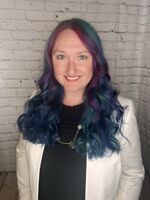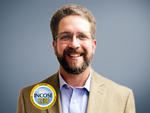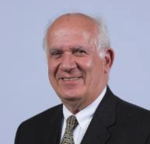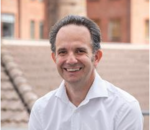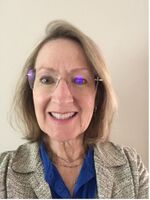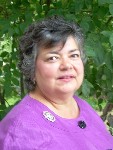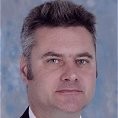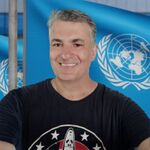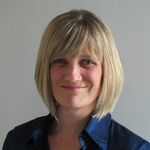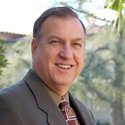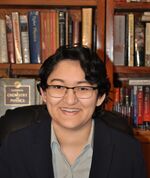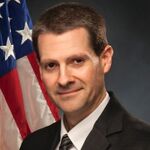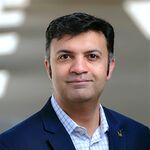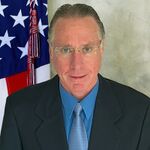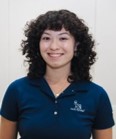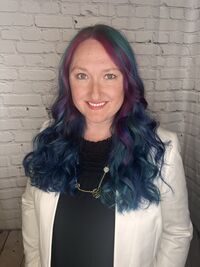Version 2.12
This version was released on 27 May 2025. This release included many changes to reflect v. 5 of the INCOSE Handbook and the 2023 version of [ISO/IEC/IEEE 15288]. In some instances, substantive rework was completed to reflect the current versions and changes will continue into the next releases of the SEBoK.
Part 2
- Inclusion of systems science axioms in the Systems Engineering Core Concepts Part 2 article.
Part 3
- An entire new group of Knowledge Areas and Articles related to Life Cycle Concepts
- Knowledge Area: Life Cycle Terms and Concepts - New Knowledge Area
- Life Cycle Concepts - New article
- Life Cycle Models - New article
- Life Cycle Stages - New article
- Technical Reviews and Audits - New article
- Knowledge Area: Development Approaches - New Knowledge Area
- Development Approach Concepts - New article
- Sequential Development Approach - New article
- Incremental Development Approach - New article
- Evolutionary Development Approach - New article
- Agile Development Approach - New article
- Knowledge Area - Agile Systems Engineering - New Knowledge Area
- Agile Systems Engineering - New article
- Industrial DevOps - New article
- Knowledge Area - Life Cycle Model Selection and Adaptation - New Knowledge Area
- Selecting the Life Cycle Model - New article
- Adapting the Life Cycle Model - New article
- Selecting the Development Approach - New article
- Adapting the Development Approach - New article
- Applying Life Cycle Processes
- Knowledge Area: Life Cycle Terms and Concepts - New Knowledge Area
- The following articles will be archived in the next SEBoK version as the content has been restructured into new articles.
- A major update to the Configuration Management article.
- Two new articles on Configuration Baselines and Configuration Management Implementation.
- One new article Why Standards? in the Systems Engineering Standards Knowledge Area in addition to renaming 'Relevant Standards' article to Systems Engineering Related Standards Landscape and major changes to Alignment and Comparison of Systems Engineering Standards and Application of Systems Engineering Standards articles.
Part 4
- Major updates to Systems of Systems (SoS) Knowledge Area and Architecting Approaches for Systems of Systems article in Part 4.
- Two new articles in Part 4 on Systems Engineering for Systems of Systems and Systems of Systems Analytic Approaches.
- Movement of System of Systems and Complexity from Part 8 to Part 4, as that topic is no longer emerging.
- Updates to Capability Engineering and a major update to Mission Engineering articles.
Part 6
- Content updates to System Resilience article in Part 6 and some cleanup to the Resilience Modeling article.
Governing Board for version 2.12
The three SEBoK steward organizations – the International Council on Systems Engineering (INCOSE), the Institute of Electrical and Electronics Engineers Systems Council (IEEE-SYSC), and Stevens Institute of Technology – provide the primary funding and resources needed to sustain and evolve the SEBoK and make it available as a free and open resource to all. The stewards appoint the BKCASE Governing Board to be their primary agents to oversee and guide the SEBoK. The stewards appoint the SEBoK Editor in Chief to manage the SEBoK and oversee the Editorial Board.
The BKCASE Governing Board includes:
- Representing the The International Council on Systems Engineering (INCOSE)
- Art Pyster (Governing Board Chair), Emma Sparks
- Representing the Systems Engineering Research Center (SERC)
- Thomas McDermott, Cihan Dagli
- Representing the IEEE Systems Council (IEEE-SYSC)
- Andy Chen (President of IEEE Systems Council), Steve Le (Treasurer of IEEE Systems Council)
Past governors include Stephanie White, Bob Rassa, Richard Fairley, Kevin Forsberg, Paul Frenz, Richard Hilliard, John Keppler, Bill Miller, David Newbern, Ken Nidiffer, Dave Olwell, Massood Towhidnejad, Jon Wade, David Walden, and Courtney Wright. The governors would especially like to acknowledge Andy Chen and Rich Hilliard, IEEE Computer Society, who were instrumental in helping the governors to work within the IEEE CS structure and who supported the SEBoK transition to the IEEE Systems Council. Andy Chen has returned to his governor role after several years off, this time representing the IEEE Systems Council.
Editorial Board for version 2.12
The SEBoK Editorial Board is chaired by the Editor in Chief, who provides the strategic vision for the SEBoK. The EIC is supported by a group of Editors, each of whom are responsible for a specific aspect of the SEBoK. The EIC and Editorial Board are supported by the Managing Editor, who handles all day-to-day operations. The EIC, Managing Editor, and Editorial Board are supported by a Student Editor, Eleni Canez, whose hard work and dedication are greatly appreciated.
| SEBoK Editor in Chief | |
|---|---|
|
Virginia Tech National Security Institute nicole.hutchison@stevens.edu or emtnicole@gmail.com Responsible for the appointment of SEBoK Editors and for the strategic direction and overall quality and coherence of the SEBoK. | |
| SEBoK Managing Editor | |
|---|---|
|
INCOSE, Cummins Inc. christopher.hoffman@incose.net Responsible for the the day-to-day operations of the SEBoK and supports the Editor in Chief. | |
You can reach out to both the Editor in Chief and the Managing Editor by emailing sebok@incose.net.
Each Editor has their area(s) of responsibility, or shared responsibility, highlighted in the table below.
| SEBoK Part 1: SEBoK Introduction |
|---|
Systems Engineering Research Center (SERC) emtnicole@gmail.com |
| SEBoK Part 2: Foundations of Systems Engineering | |
|---|---|
|
Lead Editor: Gary Smith (UK) Airbus and International Society for the System Sciences Responsible for the System Science Foundations of System Engineering. | |
|
Assistant Editor: Dov Dori Massachusetts Institute of Technology (USA) and Technion Israel Institute of Technology (Israel) Responsible for the Representing Systems with Models knowledge area |
Assistant Editor: Duane Hybertson MITRE (USA) Jointly responsible for the Systems Fundamentals, Systems Science and Systems Thinking knowledge areas. |
|
Assistant Editor: Peter Tuddenham College of Exploration (USA) |
Assistant Editor: Cihan Dagli Missouri University of Science & Technology (USA) Responsible for the Systems Approach Applied to Engineered Systems knowledge areas. |
| SEBoK Part 3: Systems Engineering and Management | |
|---|---|
Lead Editor: To Be Announced | |
|
Assistant Editor: David Endler Lead Editor of ISO/IEC/IEEE 15288 and ISO/IEC/IEEE 24748-2, Systems Engineering Consultant – Freelancer |
|
|
Assistant Editor: Phyllis Marbach INCOSE LA (USA) |
Assistant Editor: Cecelia Haskins
INCOSE |
| SEBoK Part 4: Applications of Systems Engineering | |
|---|---|
|
Lead Editor: Tom McDermott Systems Engineering Research Center (SERC) | |
|
Assistant Editor: Javier Calvo-Amodio Oregon State University |
Assistant Editor: Judith Dahmann MITRE Corporation (USA) Jointly responsible for Product Systems Engineering and Systems of Systems (SoS) knowledge areas. |
|
Assistant Editor: Michael Henshaw Loughborough University (UK) Jointly responsible for Product Systems Engineering and Systems of Systems (SoS) knowledge areas | |
| SEBoK Part 5: Enabling Systems Engineering | |
|---|---|
|
Lead Editor: Bernardo Delicado INCOSE/Indra Sistemas | |
|
Assistant Editor: Emma Sparks Cranfield University Jointly responsible for the Enabling Individuals and Enabling Teams knowledge areas. |
Assistant Editor: Rick Hefner California Institute of Technology |
| SEBoK Part 6: Related Disciplines |
|---|
|
Lead Editor: Caitlyn Singam University of Maryland, College Park |
| SEBoK Part 7: Systems Engineering Implementation Examples |
|---|
|
Lead Editor: Clif Baldwin FAA Technical Center |
| SEBoK Part 8: Emerging Knowledge |
|---|
|
Lead Editor: Ali Raz George Mason University |
|
Assistant Editor: Ha Phuong Le Purdue University |
| SEBoK Cross-Cutting: Digital Engineering |
|---|
|
Lead Editor: Ray Madachy Naval Postgraduate School |
| SEBoK Cross-Cutting: Standards |
|---|
|
Lead Editor: David Endler Lead Editor of ISO/IEC/IEEE 15288 and ISO/IEC/IEEE 24748-2, Systems Engineering Consultant – Freelancer |
The Cross-Cutting Standards team consists of the following reviewers, who provide valuable recommendations to the SEBoK Editorial Board for updates and improvements:
- Bill Bearden
- Dr. Judith Dahmann
- Alan Harding
- Garry Roedler
- Dr. Mike Yokell
Student Editor
| SEBoK Student Editor | |
|---|---|
|
University of Arizona Eleni Canez, an undergraduate student at University of Arizona, is currently supporting the SEBoK Managing Editor and Editor in Chief. We are deeply appreciative of the work Eleni has done and look forward to continuing to work with her. | |
Editor's Corner
Protecting Innovation
In today's world of high complexity and competition, innovation is required not only for improvement and growth, but for survival.
So what is innovation? Academic definitions abound and no two seem to match exactly.
Rather than quibbling over minor wording differences, let's start with a "good enough" definition that seems to take into account the most important aspects:
Innovation is the ability to generate and execute new ideas - incremental, evolutionary, or revolutionary—and it starts with creativity. (IDEO 2025)
If we can agree that innovation is important for everyone, no matter the specific context, then it is worthwhile spending some time understanding what enables an individual or group or organization to be innovative.
The first question we should examine is, "Can individuals be innovative on their own?" and the simple answer is "yes". The more nuanced answer is, "yes - but it requires some specific skills that not everyone has." For an individual to be innovative, they need:
- Curiosity - In general, curiosity means a strong desire to learn or know. In the context of innovation, it can also mean more specifically establishing behaviors that question the status quo (asking the five whys, and why not and what if). Curiosity also requires openness to new ideas and developing comfort with the risk and change.
- Creativity - Closely linked to curiosity, creativity is the ability to generate original and unique ideas. As a skill, this includes utilizing techniques to promote divergent thinking and explore multiple possibilities while resisting the urge to settle on a single idea too quickly. Creativity also includes developing one’s imagination — the ability to concretely visualize what can be versus what is. (CLO 2023)
- Problem Solving - Trying to solve a problem is often the root of innovation. Identifying and resolving problems can lead to developing new ideas and processes. (CLO 2023) Solving a problem depends on correctly identifying its cause so the best solution can be selected and implemented for sustained results. (ASQ 2025)
- Critical Thinking - We must be able to analyze the problem(s) being addressed. Critical thinking explores underlying issues and root causes, clarifies gaps between the current and desired states, analyzes risks and rewards, and evaluates the outcomes of experimentation and prototyping. (CLO 2023)
- Resilience and Adaptability - Though two separate skillsets, these are closely enough related that it is worth discussing them together here. Resilience is the ability to cope with setbacks — particularly learning and moving on from failures. Adaptability is the flexibility with which humans cope with environmental challenges (modified from Brown 2012) and is necessary to cope with the waves of change experienced in cultures of continuous innovation. (CLO 2023)
As individuals, we can begin to understand how we fair in these areas. But being a creative, curious, problem solving, critically thinking, resilient and adaptive person does not guarantee innovation. The truth is, while an individual can be innovative, to tackle truly complex problems often requires a team. The last critical skill an individual often needs to be innovative (IDEO) in itself implies the team context:
- Collaboration - "Innovation doesn’t happen in isolation. It occurs when humans come together and collaborate, which can happen at many levels." (CIO 2023) Collaboration is working effectively with a broad ranging group of other people, communicating clearly, embracing a range of perspectives, and sharing knowledge.
I've heard many different people share their views that systems engineering is by necessity a group activity. Whether it be people at conferences citing our discipline as a "team" or "contact" sport, the frequent statement that systems engineering "can't happen in a vacuum", or the implication in the 2019 update of the definition of systems engineering by the INCOSE Fellows as "transdiciplinary", we as a community seem to agree that we have to have multiple perspectives from multiple people to be successful. The same is true for innovation.
In any group - be it a team focusing on a specific problem or a large business organization or enterprise - innovation has become a common theme. And there are things that groups need to do to foster innovation. Though there are a lot of ways to think about what makes an organization innovative, I've had success in my career working with the Quality of Interaction or Qi index. This is a tool that allows groups to assess how innovative they are by looking at two main factors: psychological safety and cognitive diversity. Psychological safety is the belief that one will not be punished or humiliated for speaking up with ideas, questions, concerns, or mistakes. (Reynolds and Lewis 2018) Innovation - and in fact most problem solving efforts - include things like brainstorming, where it's important to get many different ideas on the table. In an environment without psychological safety, however, people generally only share ideas that fit within the current status quo. If innovation is in part challenging the status quo, it is easy to see how this could stifle innovation. Cognitive diversity is having differences in information, experiences, and processing styles within a group. A study by Reynolds and Lewis in 2017 found that a specific aspect of this - how individuals think about and engage with new, uncertain, and complex situations - was one of the most critical aspects of cognitive diversity for fostering innovation.
What does it look like if groups don't have both characteristics of cognitive diversity and psychological safety? Again, I like the clarity of the Qi index here. (Human Insight) We have all been in groups where individuals have strong opinions and cannot or will not be persuaded by other views. While there is a diversity of opinions, I'm sure your experience, like mine, was that this was not a terribly innovative - or maybe even effective - group to be a part of. In their framework, Human Insight defines an organization with high cognitive diversity but low psychological safety as "oppositional". And for me, at least, the common use of this word categorizes experiences in these groups fairly well.
On the other end of the spectrum, organizations can have very high psychological safety, but everyone in the organization essentially approaches problems and thinking in the same ways. Human Insight defines these groups as "uniform". It's useful for having strong team spirit and branding and, depending on what work you're doing may be great. But, with everyone bringing the same kinds of ideas to the table, the group will continue to solve problems in the same ways. Uniform may have strengths - but innovation isn't generally one of them.
Then, of course, there are groups that score lowly on both factors, where individuals generally think alike and are worried about being punished if they do bring something different forward. The Qi Index defines these groups as "defensive" and, again, I think the word sums up a lot of our experiences in groups where nothing but the status quo is desired or even tolerated. For myself, I try to get out of these groups as quickly as possible. Even if it's an environment you're comfortable being in, at the end of the day, it's difficult to find much innovation in these groups.
So what does all of this mean for you, the systems engineer who thinks innovation is important but isn't sure where to go from here? First, I'd suggest each of us start with ourselves. Think about the skills outlined above, and have an honest conversation with yourself. "Do I really bring all of these skills to the table? Which skills are stronger for me? Where could I use some help?" Self-awareness is an important first step for all of us and, as a bonus, if you spend time understanding where you fit, people in your groups are more likely to listen when you bring group-level thoughts forward.
Which brings us to the next step: think about the group(s) your a part of. Most of us are part of more than one - maybe we're on multiple projects at work, each with its own team; we volunteer with a local youth program, or sports team, or church; maybe we play softball at our church or pick up footie games with old friends in the park. Consider your experiences in these groups and where they fall on the spectrum from "generative" (highly fostering innovation) to oppositional, uniform, or defensive. Reflect on how your behavior changes between these groups. Do you find yourself sharing ideas openly in some settings, but exhibiting more "group think" in others? Again, there is not one right way for a group to function. On your sports team, uniformity might be highly useful.
Once you've thought about the groups you engage with, ask yourself, "Which of these groups would benefit from being more innovative?" Now you have some thoughts on places in your life where seeking out the skills that foster innovation and the culture of innovation might have a big impact.
As systems thinkers, we have a choice: preserve comfort, or pursue creativity. As Einstein once said, "We cannot solve our problems with the same thinking we used when we created them." SEBoK evolves because systems engineers evolve — and innovation is how we stay relevant. What small step will you take today to help our field not just survive, but thrive?
Sincerely,
Learn More
AlMunthiri, O., S. Bani-Melhem, F. Mohd-Shamsudin, S. A. Al-Naqubi. 2024. "Does leading with inclusiveness promote innovative behaviors? Examining the role of work engagement and psychological Safety." International Journal of Organizational Analysis. 32(10): 2468-2493. https://doi.org/10.1108/IJOA-09-2023-4003
Donovan, M. 2023. "Innovation as a skill set: How you can help your people learn to become more innovative." Chief Learning Officer. August 7, 2023. Available at: https://www.chieflearningofficer.com/2023/08/07/innovation-as-a-skill-set-how-you-can-help-your-people-learn-to-become-more-innovative/#:~:text=Developing%20innovation%20as%20a%20set,who%20contribute%20to%20your%20culture
IDEO U. 2025. "Innovation." IDEO U. Available at: https://www.ideou.com/pages/innovation?srsltid=AfmBOoo36Evl40KGoCrshyDp9GbvhiL8ecwC34Lp1hkAxmYxpjj2IHCJ
Mathuki, E. and J. Zhang. "Cognitive diversity, creativity and team effectiveness: the mediations of inclusion and knowledge sharing." Journal of Information and Knowledge Management Systems. 52(4). September 2022.
Oxford Bibliographies. 2025. "Adaptability". Oxford University Press. Available at: https://www.oxfordbibliographies.com/display/document/obo-9780199766567/obo-9780199766567-0047.xml
Qu, J., S. Zhao, M. Cao, J. Lu, Y. Zhang, Y. Chen, and R. Zhu. 2024. "When and how is team cognitive diversity beneficial? An examination of Chaxu climate." Heliyon. 10(1). January 15, 2024. Available at: https://www.cell.com/action/showPdf?pii=S2405-8440%2824%2900001-X
Reynolds, A. and D. Lewis. 2018. "The Two Traits of the Best Problem-Solving Teams." Harvard Business Review. April 2, 2018. Available at: https://human-insight.com/wp-content/uploads/2021/10/HBR-article-The-Two-Traits-of-the-Best-Problem-Solving-Teams.pdf
Reynolds, A. and D. Lewis. 2017. "Teams Solve Problems Faster When They’re More Cognitively Diverse." Harvard Business Review. March 30, 2017. Available at: https://human-insight.com/wp-content/uploads/2021/10/HBR-article-Teams-Solve-Problems-Faster-When-Theyre-More-Cognitively-Diverse.pdf
Tharpe, W., M. Leachman, and M. Saenz. 2020. "Tapping More People's Capacity to Innovate Can Help States Thrive." Center on Budget and Policy Priorities. December 9, 2020. Available at: https://www.cbpp.org/research/state-budget-and-tax/tapping-more-peoples-capacity-to-innovate-can-help-states-thrive
